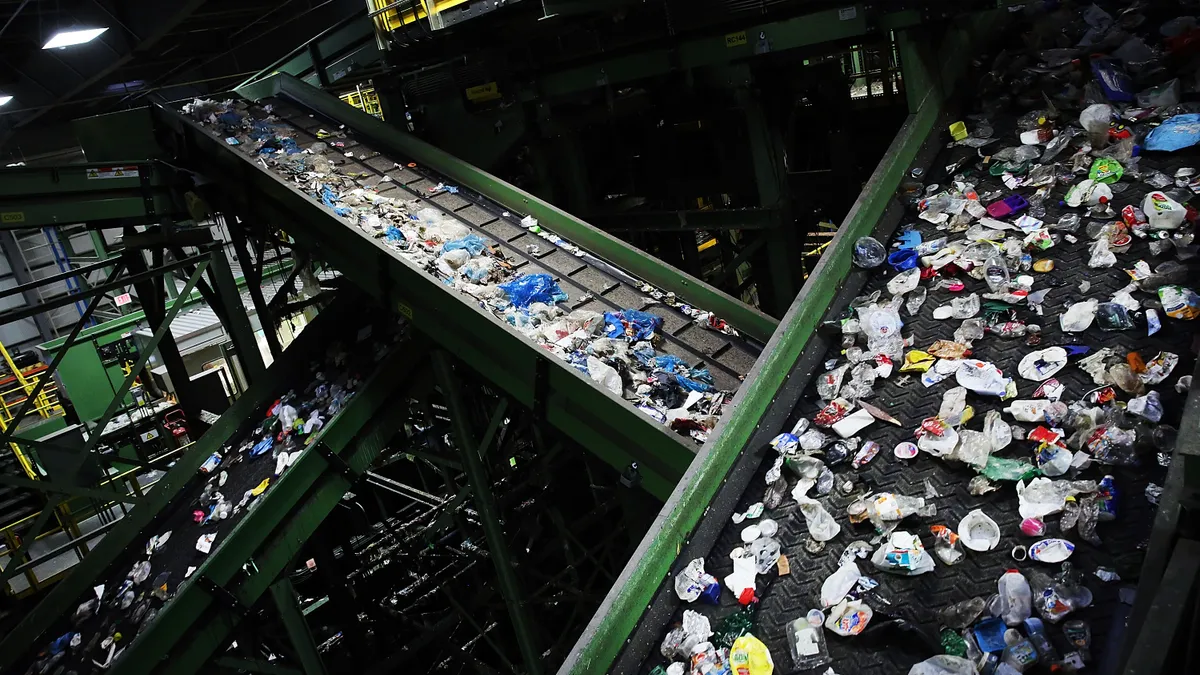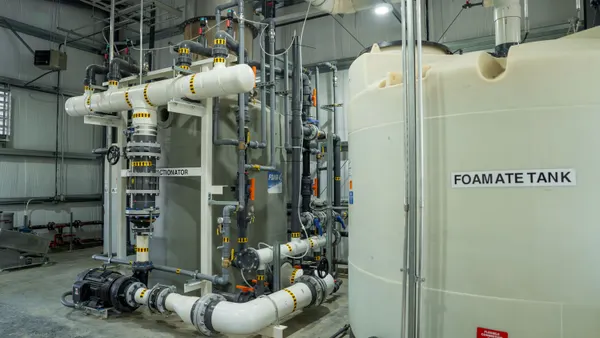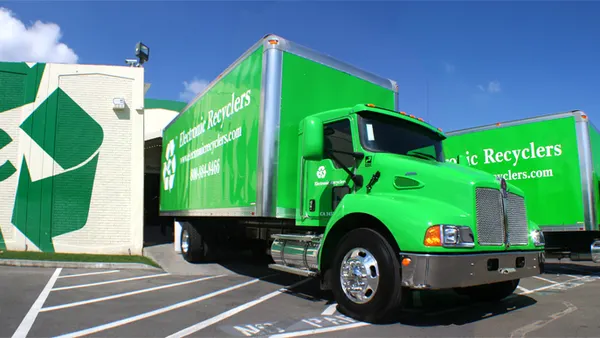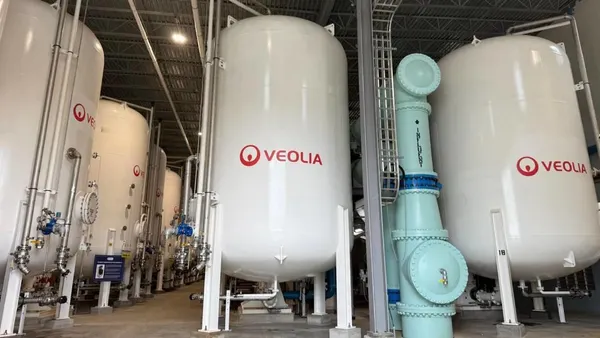Dive Brief:
- The Recycling Partnership (TRP) recently announced six MRFs facing challenges with polypropylene (PP) sorting and recycling will receive grants worth a collective $1.8 million for facility upgrades. The grant program has awarded $4.2 million to date, which TRP estimates will grow PP curbside acceptance by 6% nationwide once all equipment is installed by early next year.
- The grants are provided through TRP's Polypropylene Recycling Coalition that launched last year and have reportedly prompted an additional $10 million in MRF investments to date. The group is supported by businesses all along the PP value chain, including brands like Keurig Dr Pepper, Nestlé, Procter & Gamble and the Walmart Foundation.
- "We don't pay for 100% of these upgrades. We pay for a portion and then the facility will pay for the rest and invest private dollars into it," said Sarah Dearman, vice president of circular ventures at TRP. "It's really a great example of the power of grants and how they can be catalytic."
Dive Insight:
According to the Partnership's 2020 State of Curbside Recycling Report, up to 1.65 billion pounds of polypropylene may be available per year from single-family homes and much of it is not being captured. That would put it at a higher generation rate than HDPE. But experts say accurate data about PP generation and recycling is rather thin.
"The entirety of the picture of propylene recycling is really obscured by a lack of data," said Adam Gendell, senior consultant at Eunomia Research & Consulting.
Plastics experts say a key reason polypropylene markets aren't as established as PET or HDPE is that the material still is not accepted in all domestic curbside recycling programs. In the past, the material's lower volumes and value meant the No. 5 plastic was often sold in mixed 3-7 bales.
The lagging market value leads some recyclers and advocacy groups to believe that recycling PP isn't worth the trouble. Plus, a lot of PP used to be sent overseas, but that changed after China's and other countries' imported material crackdowns. In fact, the Partnership's state of recycling report says that #3-7 plastics — of which polypropylene is the main target resin — were the hardest hit material by Chinese export market changes.
More initiatives are emerging to boost PP recycling, including investments from the new Closed Loop Circular Plastics Fund. The report points out that recent MRF and processing infrastructure development should help PP increasingly become a core material collected curbside. According to the Partnership, members of the Polypropylene Recycling Coalition have made more than $32 million in other recent investments to boost reclamation and reprocessing capacity by an estimated 800 million pounds in North America.
"Polypropylene is one of the newer materials in the recycling stream. It's still growing and it's still improving. The amount of progress that's been made in the last year alone is incredible," Dearman said.
However, in January 2020 the Sustainable Packaging Coalition's How2Recycle labeling initiative downgraded the recyclability classifications for some PP rigid containers and cups to "check locally," a move that signifies fewer Americans are able to easily recycle an item. How2Recycle said that while just over 60% of Americans had access to a PP recycling program, "there is uncertainty around how many of those programs ultimately may be landfilling or incinerating the material."
"The timeline is really important for this narrative," said Gendell, who previously worked on How2Recycle. "The How2Recycle downgrade of polypropylene items was January 2020... before the formation of the Polypropylene Recycling Coalition. That was really one of the impetuses — if not the impetus — for forming the Polypropylene Recycling Coalition."
Referring to the PP downgrade, Dearman said "that type of instability is exactly what we have to address as an industry and why this example of companies coming together to invest pre-competitively to improve the status of the material is so powerful. It serves as an example for other materials and packaging formats and shows what's really possible."
Rather than the coalition dictating what the grants will fund, MRFs typically devise their proposals based on their individual needs. The majority of projects include technology additions like optical sorters or robotics to improve sortation, Dearman said.
Education and outreach also are important to get people to participate in recycling. Some of the coalition's resources reflect that and include funding for updating educational materials to ensure residents understand which materials they can now recycle. A previous TRP report also called out the potential to boost PP recovery by expanding overall recycling collection access.
The grant recipients hail from all parts of the country because PP challenges don't solely exist in one region, Dearman said. However, the challenges might vary in different areas.
"My opinion is, yes, [the coalition] is absolutely moving the needle," Gendell said. "They've impacted almost 10% of the U.S. population's ability to recycle polypropylene packaging, and they've done that in less than two years. That's tremendous. And that's really, really hard to do."
That being said, "this model is going to have a ceiling," Gendell said, explaining that not every MRF will necessarily be interested in grants for new equipment or adding a new material stream. "Some of them are going to jump at the opportunity... There's another section that needs to be convinced that this is a good opportunity for them and that's got longevity. And then there's another portion of the bell curve that's just never going to be interested in this."
Still, the coalition will continue to award grants because "we can't stop at just getting 60% access; we have to continue to expand access, increase participation and get more of that material back for recycling," Dearman said.
Correction: A previous version of this article misstated the specific reason How2Recycle changed the labeling category for PP.











